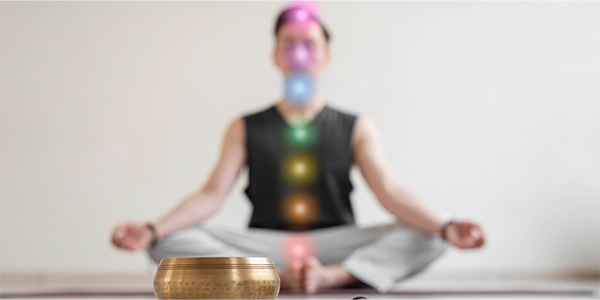In the ancient traditions of Yoga and Ayurveda, the concept of chakras serves as a roadmap to understanding and nurturing holistic health. These energy centers, when balanced, promote physical, mental, and spiritual well-being. Let’s embark on a journey through the seven main chakras, their associated devtas (deities), and their profound significance in maintaining vitality according to these ancient wisdoms.
- Muladhara Chakra (Root Chakra):
Situated at the base of the spine, Muladhara is the foundation of the chakra system. It symbolizes stability, security, and a sense of belonging. Lord Brahma, the creator, presides over this chakra, guiding us towards a grounded existence. Balancing Muladhara fosters feelings of safety and rootedness, crucial for overall well-being.
- Swadhisthana Chakra (Sacral Chakra):
Nestled in the lower abdomen, Swadhisthana governs creativity, sexuality, and emotional balance. Lord Vishnu, the preserver, oversees this chakra, encouraging us to embrace our passions and emotions. Balancing Swadhisthana cultivates healthy relationships and unlocks the flow of creative energy within us.
- Manipura Chakra (Solar Plexus Chakra):
Radiating from the upper abdomen, Manipura symbolizes personal power, self-esteem, and digestion. Lord Rudra, the destroyer, reigns over this chakra, urging us to harness our inner strength. A balanced Manipura chakra empowers us to assert ourselves confidently while maintaining digestive harmony.
- Anahata Chakra (Heart Chakra):
Positioned at the center of the chest, Anahata embodies love, compassion, and emotional healing. Lord Ishvara, the supreme controller, watches over this chakra, guiding us towards unconditional love and empathy. Nurturing Anahata fosters harmonious relationships and inner peace, vital for emotional well-being.
- Vishuddha Chakra (Throat Chakra):
Nestled in the throat region, Vishuddha governs communication, self-expression, and truth. Lord SadaShiva, the auspicious one, presides over this chakra, inspiring us to speak our truth with clarity and authenticity. Balancing Vishuddha enables us to express ourselves freely and fosters effective communication.
- Ajna Chakra (Third Eye Chakra):
Situated between the eyebrows, Ajna represents intuition, wisdom, and insight. Lord Maheshwara, the great lord, oversees this chakra, guiding us towards inner knowing and spiritual awakening. Balancing Ajna enhances intuition and fosters clarity of thought, essential for navigating life’s complexities.
- Sahasrara Chakra (Crown Chakra):
At the crown of the head, Sahasrara is the pinnacle of the chakra system, symbolizing unity consciousness and spiritual connection. It is beyond the realm of individual identity and is often associated with pure consciousness itself. While not traditionally associated with a specific devta, Sahasrara represents the culmination of spiritual evolution and the realization of one’s true nature.
Incorporating chakra practices into our daily lives with the help of the right expert can lead to profound transformation and holistic well-being. Whether through yoga, meditation, aromatherapy, or dietary adjustments based on Ayurvedic principles, nurturing and balancing the chakras facilitates a harmonious integration of mind, body, and spirit. By cultivating awareness and working with these energy centers, we embark on a journey towards optimal health, vitality, and spiritual fulfilment.

